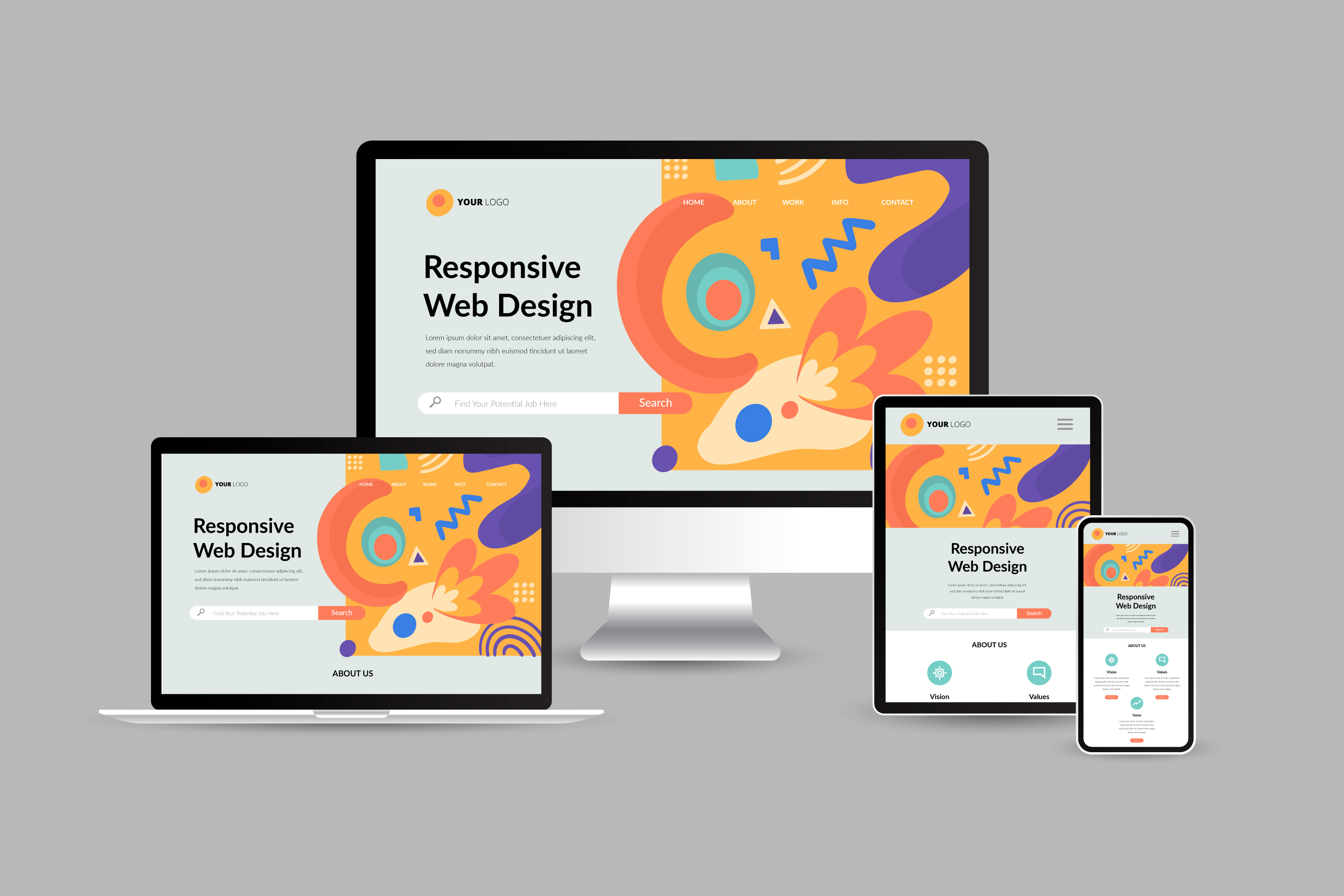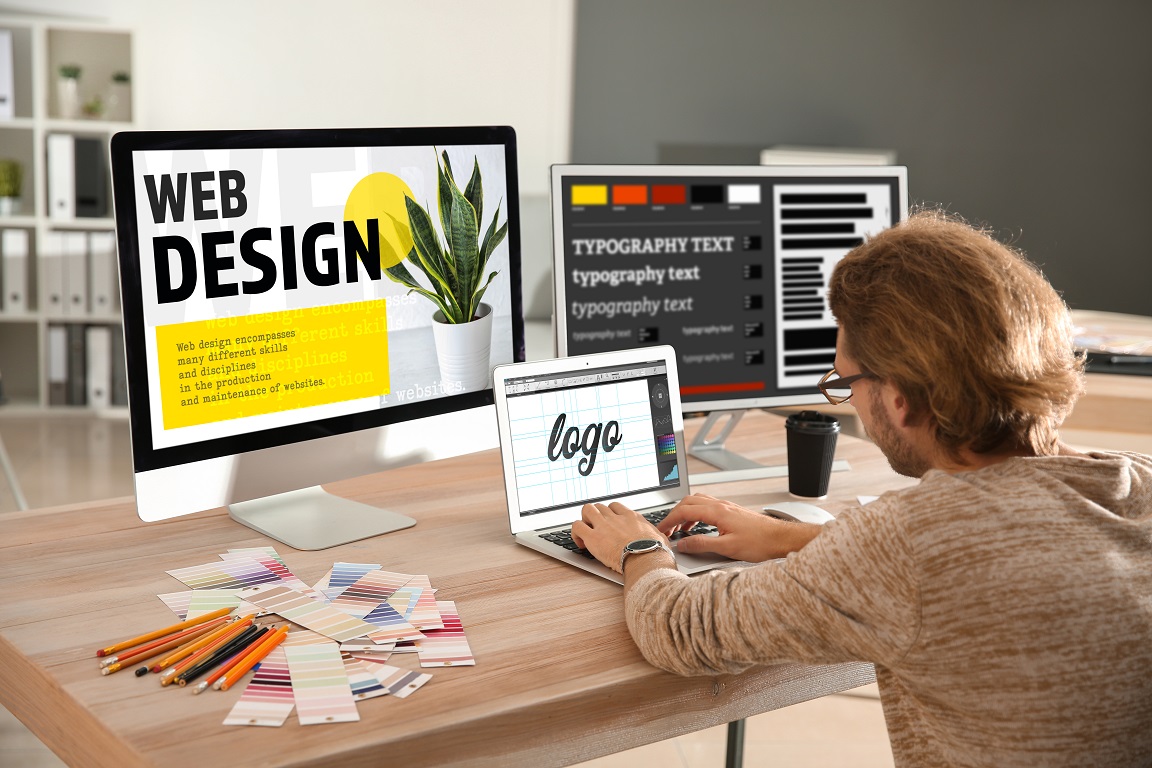Change Your Organization with Personalized Website Design Services
Maximize Customer Experience With Innovative Site Layout Solutions
In today's digital landscape, maximizing individual experience through innovative website style solutions is critical for services seeking to engage their audience successfully. The assimilation of interactive components can additionally boost the user trip, prompting a reevaluation of standard style methods.
Comprehending User-Centric Style

To execute user-centric design efficiently, it is vital to conduct comprehensive research study, including individual meetings, surveys, and functionality screening. These research methods provide beneficial data that notifies layout decisions, making sure that the end product aligns with individual assumptions. In addition, developing customer characters can assist developers empathize and imagine with the end-users, directing the style process towards extra relevant remedies.
Furthermore, repetitive style is a crucial element of user-centric methodologies. By continuously testing and refining designs based on user feedback, designers can recognize discomfort factors and locations of enhancement, leading to an extra polished last product. Ultimately, user-centric design is not merely a stage in the growth process yet a continual dedication to focusing on individual needs, causing even more effective and appealing digital experiences.
Importance of Responsive Layouts
As digital interactions significantly take place across a selection of tools, the importance of responsive designs can not be overemphasized. A receptive design ensures that an internet site adapts flawlessly to different screen sizes, from desktop computer displays to smart devices. This adaptability is essential in today's multi-device landscape, where customers expect a interesting and consistent experience despite how they access web content.
The primary benefit of responsive style is improved customer fulfillment. When a site is optimized for all tools, it reduces the need for zooming, scrolling, or straight navigating, which can lead and discourage customers to higher bounce prices. In addition, internet search engine like Google focus on mobile-friendly web sites in their ranking formulas, making receptive formats essential for effective search engine optimization approaches.
Rather of handling separate variations of a website for different tools, a single, fluid style can be changed, saving time and sources. Eventually, spending in receptive formats is not simply a pattern; it is a basic concept of modern-day internet layout that substantially boosts customer experience and involvement.
Enhancing Navigating and Access
Efficient navigating and availability are critical components of a well-designed website, substantially affecting user engagement and contentment. An easy to use navigation framework enables site visitors to discover details rapidly and intuitively, decreasing aggravation and increasing the likelihood of repeat check outs. Implementing clear, descriptive tags for navigation links, along with a logical pecking order, can assist customers flawlessly via the website.
Availability is similarly crucial, making sure that all customers, no matter their capabilities or disabilities, can engage with the website efficiently. This can be accomplished via using proper color contrasts, text sizes, and alt text for images, which with each other improve the experience for visually impaired individuals. Including keyboard navigation and screen reader compatibility expands access for users with diverse requirements.
Regular usability screening can provide useful insights into navigation performance and access concerns. By collecting comments from actual customers, designers can determine pain factors and make enlightened changes. Ultimately, prioritizing navigating and ease of access not only fosters inclusivity however likewise grows a favorable individual experience, enhancing the brand name's dedication to quality and customer care in an increasingly digital landscape.
Making Use Of Aesthetic Power Structure Effectively
Visual power structure works as a guiding framework in website layout, directing customers' attention to one of the most crucial components on a web page. By strategically arranging aesthetic components such as typography, spacing, and color, developers can produce a clear path for customers to comply with. This framework not only boosts user experience yet also improves content comprehension.
One reliable way read this article to establish aesthetic hierarchy is through making use of dimension and scale. Larger elements naturally attract more interest, making headings and essential visuals noticeable. Enhancing this approach with contrasting shades can better separate main web content from second details, ensuring that important details stands out.
Moreover, the arrangement of elements plays a vital duty in leading user interaction. Employing a grid design can develop a cohesive circulation, while whitespace assists to separate content and reduce cognitive load - Website Design. This deliberate spacing allows customers to refine details much more easily, resulting in enhanced engagement
Last but not least, making use of constant style patterns assists strengthen visual power structure, providing customers with acquainted cues as they browse the site. By prioritizing these concepts, developers can efficiently make best use of customer experience, making certain that visitors can effortlessly find the info they seek.
Incorporating Interactive Aspects
The incorporation of interactive components into website style can substantially enhance user engagement and total experience. Interactive attributes such as sliders, polls, and tests not just mesmerize customers however additionally promote active engagement, making the searching experience more unforgettable. By motivating customers to interact, web sites can effectively maintain attention and decrease bounce rates.
Additionally, incorporating dynamic material like computer animations and float results includes an enticing layer of interactivity. These components can guide customers without effort through the website, highlighting important information and contacts us to activity. For instance, animated switches can draw focus and enhance click-through rates.
Additionally, personalization through interactive devices such as chatbots or suggestion engines enables websites to accommodate specific choices, fostering a sense of link. This customized technique not just enhances individual satisfaction but likewise motivates repeat sees.
Incorporating analytics devices to track interactions supplies useful insights right into customer habits, enabling continuous improvement of the interactive components. Eventually, a well-designed interactive experience changes a passive surfing session into an appealing journey, causing enhanced individual contentment and commitment. Integrating interactive aspects is important for making best use of customer experience in modern web site layout.
Verdict

In today's electronic landscape, making the most of customer experience with cutting-edge web go to this website site style services is essential for businesses looking for to engage their audience successfully. Inevitably, focusing on navigating and accessibility not only cultivates inclusivity but additionally grows a positive user experience, strengthening the brand name's dedication click to investigate to top quality and customer treatment in a significantly digital landscape.

In verdict, taking full advantage of user experience with ingenious site layout solutions demands a commitment to user-centric principles. Website Design.